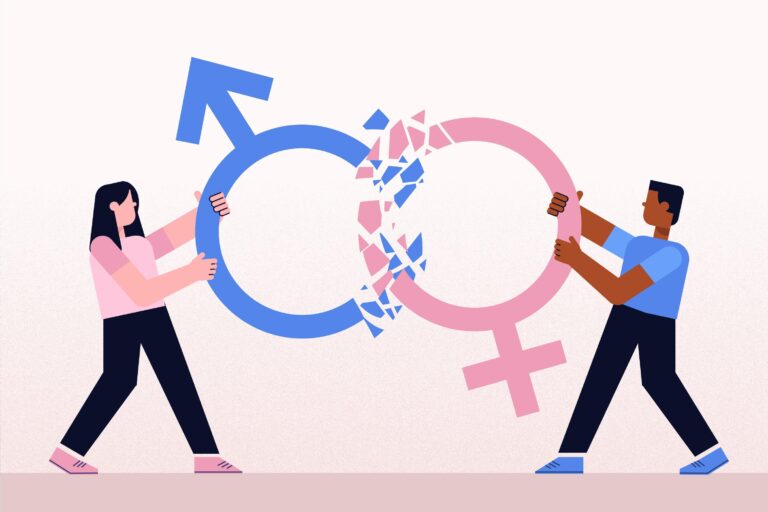The Role of Pop Culture in Shaping Gender Perceptions and Expectations
In today’s rapidly evolving world, popular (pop) culture has become an integral part of our lives. From movies and music to television shows and social media, it has the power to shape our perceptions and expectations, particularly when it comes to gender roles and related stereotypes. Gender roles refer to the set of rules that are prescribed to people in the society on the basis of their gender. Examples of gender roles include: young girls are expected to play with dolls while boys are expected to play with cars, women should stay at home and care for their family while men are the primary breadwinners, etc. In this article, I will attempt to navigate the gender stereotypes that pop culture knowingly (or unknowingly) perpetuates while also talking about how things have changed in recent times.
Portrayal of women in fairytales
Most often cultural books, movies, TV shows, etc., portray women as damsels in distress who need men to rescue them from danger. The biggest contributors to this ideology are fairy tales. Snow White, Cinderella, The Sleeping Beauty- all of these stories involve the princesses getting saved by their respective knights in shining armor, depicting women as people who cannot fend for themselves. In her book “The Cinderella Complex”, Colette Dowling talks about how women consciously or unconsciously have a wish to escape responsibility, and in the process develop psychological dependence. The very title of the book implies a certain connection between fairy tales and women’s fear of independence, and how by consuming the content of these fairy tales in their childhood, women absorb the ‘ideal’ feminine traits such as the need for a man, obedience, etc. portrayed by the protagonists of the stories. Moreover, most fairy tales have a female villain- a jealous stepmother or an evil witch, etc. This instills in children the idea that women are villains from a very young age.
It would be unfair to not look at the other side of the coin. While The Sleeping Beauty is now seen as inappropriate due to the blurred lines of consent, it is also seen as the most feminist movie of its time. This is because not only did the film pass the Bechdel test (there should be at least two women in the film who talk to each other about something other than men), but it also portrays three other female main characters who do not fit into the “feminine” standards set by society. More recently, with Maleficent and Frozen, fairy tales have embraced the idea of women-centric stories where said women are independent and strong. Both films also portray men as villains, which is a welcome change from previous films by making it more inclusive and equal.
Beauty Standards and Prejudice
The reason I wanted to focus a bit more on fairy tales is because they are the perfect examples to explain how gender stereotyping begins in childhood, no matter how much their parents might try to avoid it. However, as children grow older, it is their responsibility to cut the noise and consume media mindfully so as to not form ideas that are not based in evidence. Modern cinema, music, and texts still consist of prejudice that has trickled down, albeit subconsciously, from the patriarchal system that the world has been entrenched in for generations. One of the most evident forms of reinforcement of prejudice and stereotyping is that of beauty standards prevalent today. Women, in particular, are subjected to intense scrutiny and pressure to conform to a specific body type, leading to issues like body dysmorphia and low self-esteem. The emphasis on thinness, flawless skin, and an overall youthful appearance creates an unattainable standard that can adversely affect individuals’ mental health. Social media is one of the many ways through which people can develop such harmful mindsets. Recent posts, however, have shown a step taken in the right direction with people preaching the idea of body neutrality and staying healthy.
Pop culture as a Harbinger of Positive Change
Even though popular culture has been a catalyst for the continued existence of biased gender roles in society, it also holds the power to challenge them. One such show is The Marvelous Mrs. Maisel. Set in the 1950s and 1960s, this show tells the story of Miriam Maisel, a housewife who discovers her talent for stand-up comedy. The series successfully explores themes of female empowerment, pursuing dreams, and breaking societal expectations of the “ideal” housewife, for which it has also received critical acclaim. This is just one of many examples for how pop culture can inspire positive change.
Conclusion
As consumers and participants in pop culture, we must remain critical and discerning. By supporting media that celebrates diversity, challenges stereotypes, and fosters inclusivity, we can actively contribute to a more progressive and equitable society. Ultimately, pop culture has the ability to shape our perceptions and expectations, but it is our collective responsibility to shape pop culture itself, fostering an environment that reflects and respects the diversity of the human experience.
Published on July 31, 2023.
Stay tuned for new blogs every Monday!
About the Author
Avya Sood is a student of Economics and Psychology from Punjab, India. You can reach out to her at [email protected]
Follow the iMPACT Magazine on social media for more informative content.






